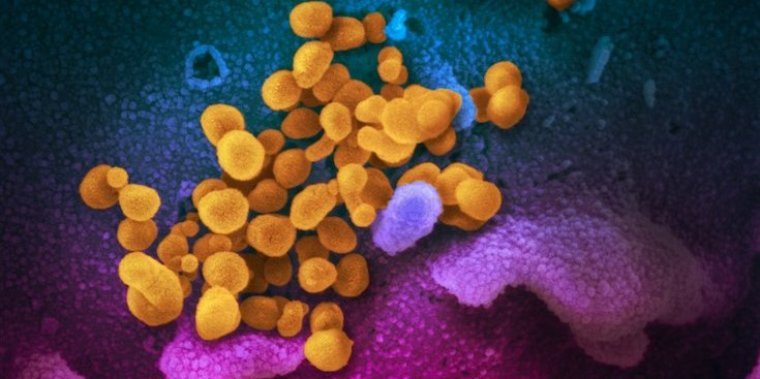| Health / Health News |
Study reveals contamination of air and environment near patients with COVID-19
A study by University of Nebraska Medical Center researchers provides new evidence of infectious SARS-CoV-2 throughout the environment and in air samples collected in COVID-19 patient care areas. SARS-CoV-2 is the virus that causes COVID-19.

A new study has documented contamination of the environment and air near patients with COVID-19. Photo: NIAID
During the initial isolation of 13 people confirmed positive with COVID-19, air and surface samples were collected in 11 isolation rooms to examine environmental contamination.
The researchers found viral contamination on all commonly used surfaces in the rooms, and very high levels of the virus in the air grates. Air samples from hallways outside patient rooms, where staff members were moving in and out, were also positive.
Evidence of the virus in the air and on many commonly used items, including bathroom facilities, indicates that SARS-CoV-2 is widely disseminated in the environment.
The results of the research suggest that COVID-19 patients, even those who are only mildly ill, may spread the virus and contaminate surfaces that pose a risk of transmission. The results also suggest that airborne isolation precautions are appropriate.
"Studies like this are needed to understand proper precautions for healthcare workers, first responders and others who care for the ill and are needed to combat this pandemic," said Joshua Santarpia, a pathologist and microbiologist at the medical center. "This ongoing work will continue to improve our understanding of SARS-CoV-2 transmission and help identify ways to improve safety in the care of patients with COVID-19."
The researchers stress that careful environmental cleaning and disinfection of surfaces, including those in bathrooms, is important. They recommend that appropriate personal protective equipment, including respiratory protection, be used in the treatment of people known or suspected to be infected with SARS-CoV-2.
"This study increases our knowledge of the stability and spread of SARS-CoV-2 in indoor environments," says Joanna Shisler, a program director in NSF's Division of Integrative Organismal Systems. "The information can help us understand how to clean and maintain rooms and buildings to decrease possible virus transmission." (National Science Foundation)
YOU MAY ALSO LIKE





